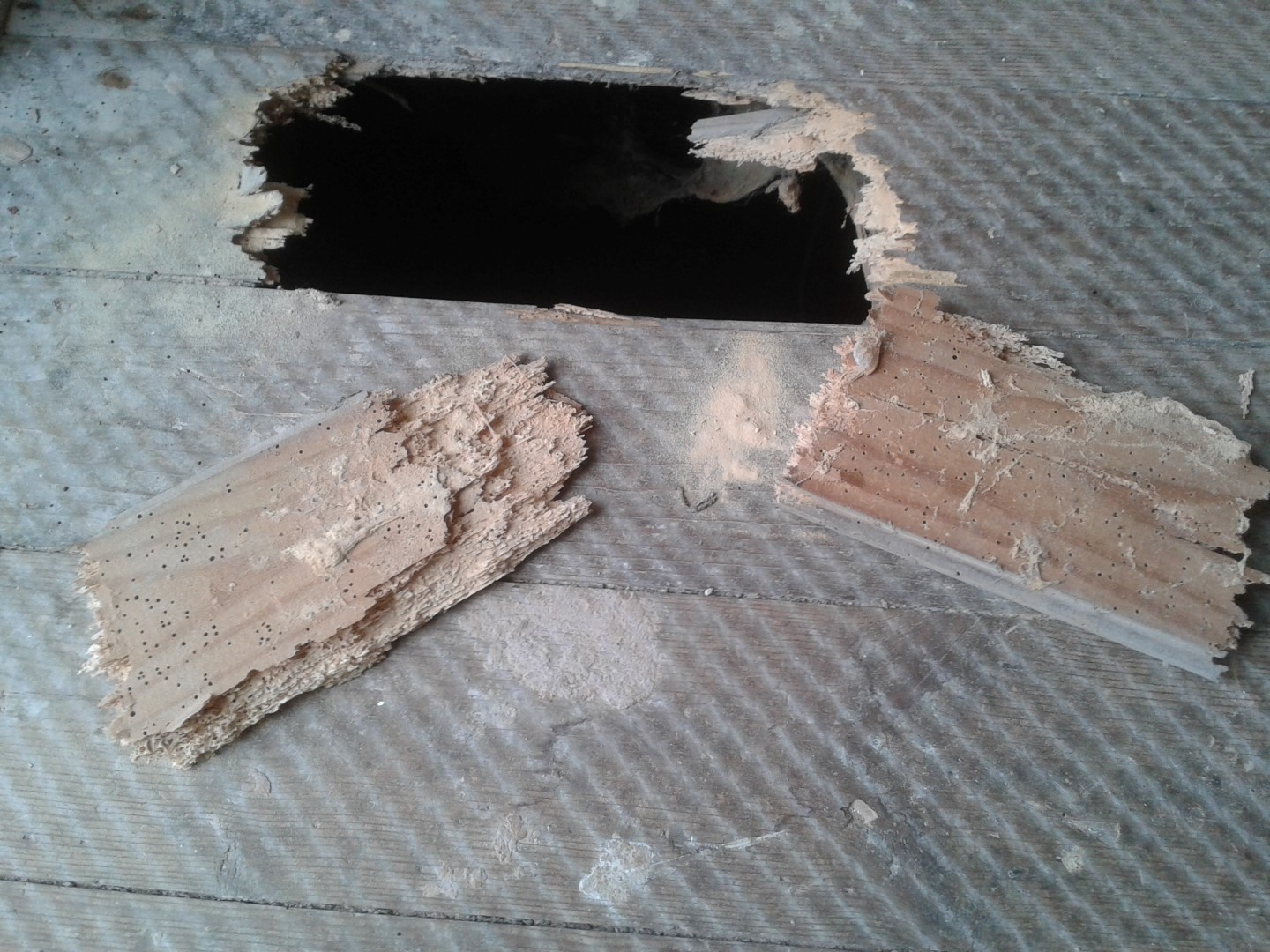Wood Boring Weevil
Euophryum confine and pentarthrum huttoni.
Though they will only target timbers already pre-digested by fungi. Although removing the moisture will typically eradicate the weevil as well, they can cause an already troublesome situation with damp to become worse and require timber replacement as a result.
Common Furniture Beetle
Anobium punctatum.
They can live within your timbers for 3 to 5 years before they go on to lay eggs. They generally target the edges of softwoods and can cause severe structural problems. So severe, in fact, that you may need to completely replace your floor if they aren’t eradicated.
House Longhorn Beetle
Hylotrupes bajulus
Although rare and restricted primarily to the south of the UK, these are the largest wood boring beetle you’re likely to find. With larvae up to 30mm in length the large holes present an obvious danger to the structure of softwood timbers, which can be dangerous if they’re used as part of the building’s structure.
Death Watch Beetle
Xestobium rufovillosum.
Primarily attacking hardwoods and requiring damp for a serious infestation, the death watch beetle can be a severe problem. Infestations can cause structural weakening and even hollowing of the timbers, commonly in the joist ends where they are likely to become damp.
Powder Post Beetle
Lyctus brunneus.
Preferring wide-pored hardwoods such as oak, elm, and ash, the powder post beetle can’t find suitable habitation in older, low starch timbers. These can do severe damage as they tunnel along the gain, though they can be treated in the same way as the common furniture beetle.
Contact us



